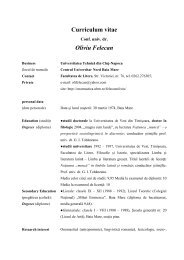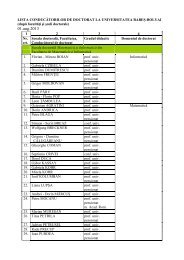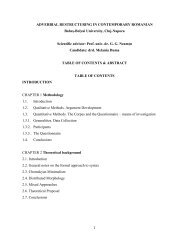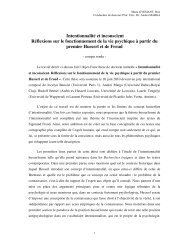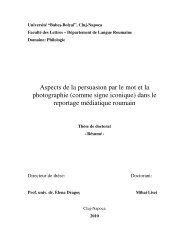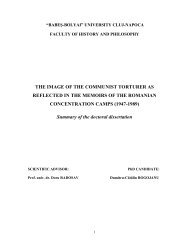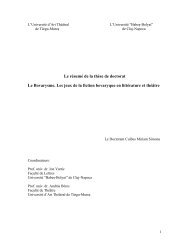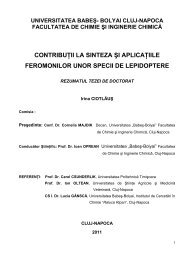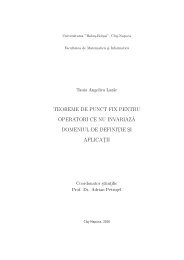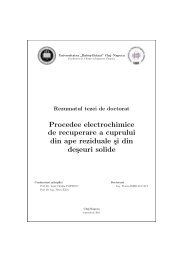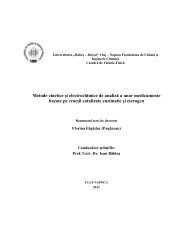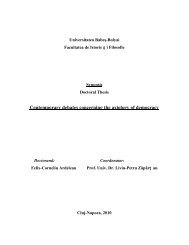CONTRIBUTION TO CINCHONA ALKALOIDS CHEMISTRY
CONTRIBUTION TO CINCHONA ALKALOIDS CHEMISTRY
CONTRIBUTION TO CINCHONA ALKALOIDS CHEMISTRY
You also want an ePaper? Increase the reach of your titles
YUMPU automatically turns print PDFs into web optimized ePapers that Google loves.
Ph.D. Thesis Abstract Contribution to cinchona alkaloids chemistry<br />
.<br />
During this experiments it was observed that when using a molar ratio<br />
QCD: BzCl = 1:1the yield has a value of only 62.3%, which is the lowest. When the molar ratio<br />
QCD:BzCl is 1:1,66 yield increases to 83%. If using a molar ratio QCD:BzCl of 1:2 we do not<br />
observe a significant increase in yield (85%). Based on the results (table 2.5, figure 2.5) we<br />
considered 1,2-aminoalcool: BzCl of 3:5 an optimal molar ratio. An increase in the molar ratio of<br />
1:2 is not economically optimal. Table 2.5 presents the influence of the 1,2-aminoalcohol:TEA<br />
ratio over the synthesis yield.<br />
Tabel 2.5. Influența raportului molar 1,2-aminoalcool:TEA<br />
Nr.<br />
Exp.<br />
Alcool Clorura de<br />
Tip<br />
Nr.moli<br />
(mmoli)<br />
benzoil<br />
(mmoli)<br />
19<br />
TEA<br />
(mmoli)<br />
Randament<br />
(%)<br />
1 QCD 1 1,66 1 53,6<br />
2 QCD 1 1,66 1,5 74,2<br />
3 QCD 1 1,66 2 83,8<br />
4 QCI 1 1,66 1 50,4<br />
5 QCI 1 1,66 1,5 77,1<br />
6 QCI 1 1,66 2 84,5<br />
Figura 2.5. Influența raportului molar 1,2-aminoalcool:TEA



